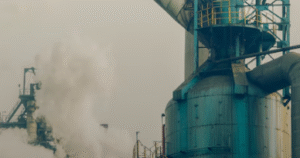$YPF
#Argentina #OilProduction #EnergyMarkets #ShaleOil #VacaMuerta #YPF #OilIndustry #CrudeOil #EnergyTransition #FossilFuels #MarketTrends #GlobalEnergy
Argentina’s Vaca Muerta shale formation has marked a significant breakthrough with oil production hitting a record 400,000 barrels per day (bpd) in the third quarter. This represents a year-on-year surge of 35%, as reported by Rystad Energy. The growth comes on the back of advanced productivity and improved infrastructure for oil transportation, with national oil company Yacimientos Petrolíferos Fiscales (YPF) spearheading this development. YPF alone accounted for nearly 55% of Vaca Muerta’s total output in the past quarter, reflecting the company’s critical role in the region’s energy expansion. Local independent producers also contributed to the increased production levels, highlighting a collaborative industry effort that underscores the region’s growing importance in the global energy market.
The increase in production is largely attributable to expanded takeaway capacity, crucial for transporting crude oil from the landlocked Vaca Muerta region to export hubs and refineries. As Argentina seeks to position itself as a key player in the global energy markets, the government’s investment in pipeline infrastructure has proven pivotal. One such project, the extensive Oleoducto Transandino pipeline, is a cornerstone in solving logistical constraints that previously hampered production growth. Financial analysts anticipate that ongoing investments in infrastructure will bolster the economy by increasing export earnings and strengthening Argentina’s peso, which has depreciated significantly in recent years. However, questions remain about the long-term sustainability of such growth amid volatile global oil prices and the ongoing energy transition towards renewables.
YPF, as a publicly traded company, stands out as one of the key beneficiaries of this surge in production. The company has enjoyed increased investor attention as Vaca Muerta’s growth prospects steadily improve. YPF’s stock performance, thus, serves as a bellwether for Argentina’s broader energy market. Investors eyeing the energy sector are likely to monitor YPF closely, given its dominance in the shale play and steady output gains. Meanwhile, the participation of independent producers offers diversification, which could mitigate concentration risks in Argentina’s oil market. For global investors, this positions Argentina as an increasingly attractive energy investment destination, albeit with some caveats related to the country’s political and economic challenges.
Vaca Muerta’s ambitious goal to reach 1 million bpd by 2030 showcases its potential to transform Argentina into a regional energy hub. However, achieving this target will require navigating a myriad of challenges, including fluctuating oil prices, global demand uncertainties, and geopolitical dynamics. Additionally, the energy transition is likely to pose systemic risks to fossil fuel-dependent economies in the coming decades. In the near term, though, the increased output from Vaca Muerta is expected to alleviate Argentina’s trade imbalance and bring much-needed foreign currency. For international energy markets, Vaca Muerta’s growth underscores the continued demand for strategic fossil fuel investments, even as green energy projects accelerate.







Comments are closed.